Ruger’s Hawkeye Varmint Target Rifle
An essential tool for the serious varmint hunter
other By: Stan Trzoniec | January, 26
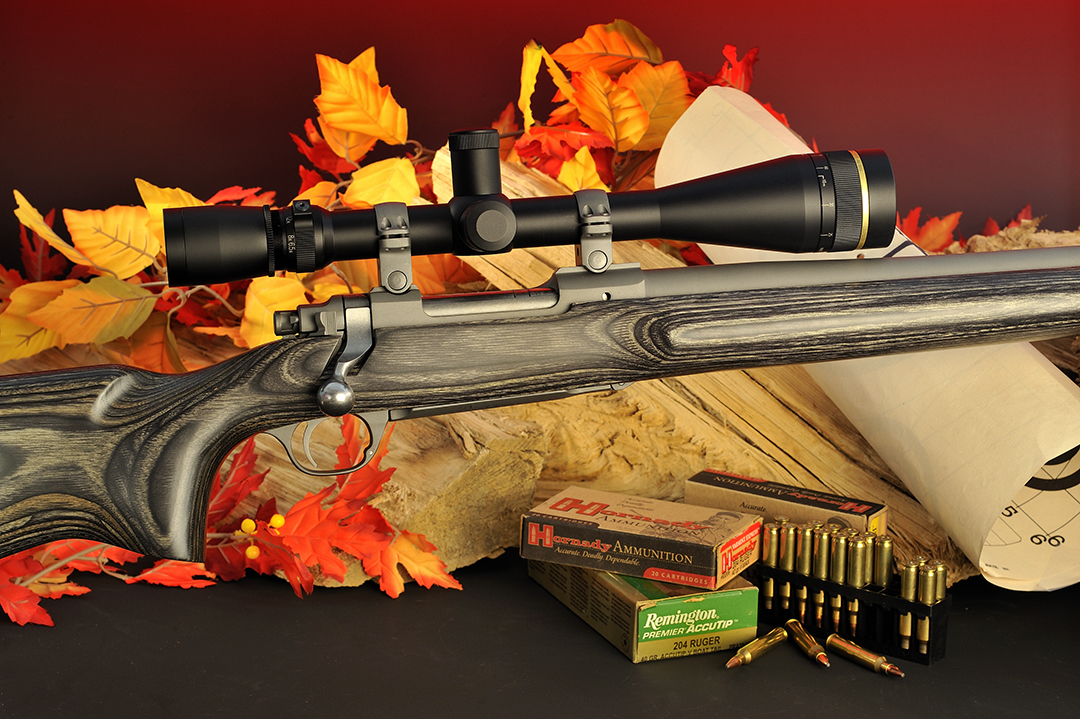
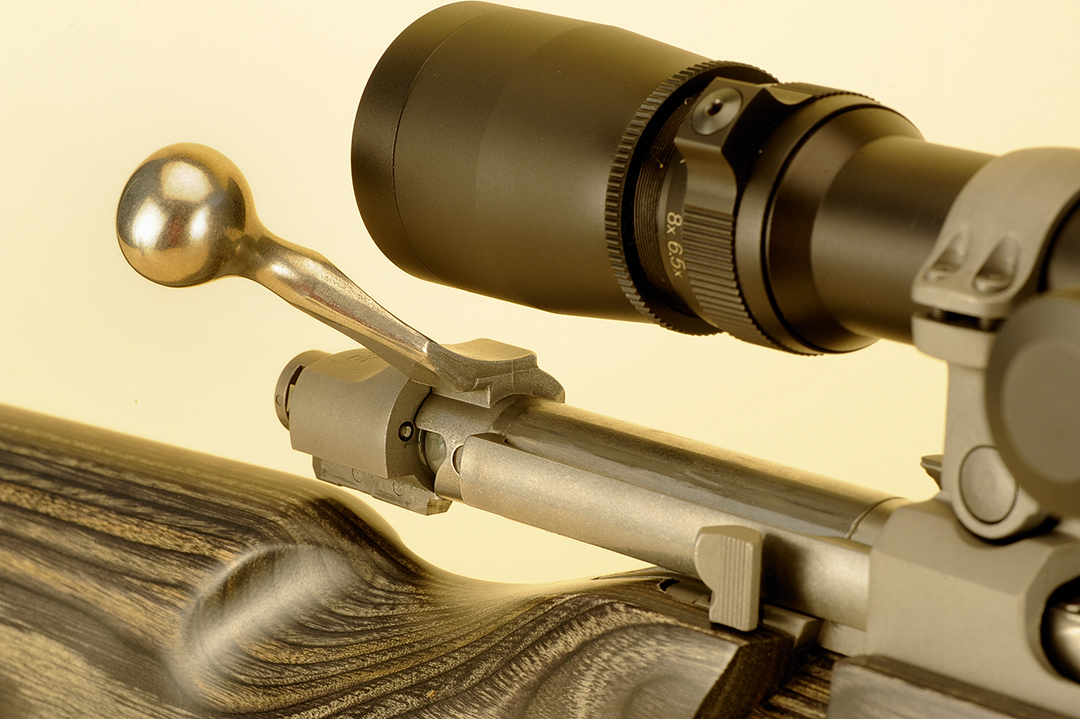

Listed under the “Hawkeye” section of the Ruger lineup, it carries the trusted and improved Mark II action that started it all around 1968 as the Model 77. Since Bill Ruger was a savvy businessman, this was his answer to the popular Remington Model 700 and the Winchester Model 70 even falling in line with the addition of the number seven in the model makeup. Never standing still, the Model 77 Mark II came about in 1989, with some additional improvements almost 20 years later at the Hawkeye series with new stock lines and an upgraded trigger. Since then, Hawkeye models have grown into rifles to suit every taste and hunting needs to include the Standard, Compact, Long Range Target, Predator, Hunter and the subject of this article – the Varmint Target.
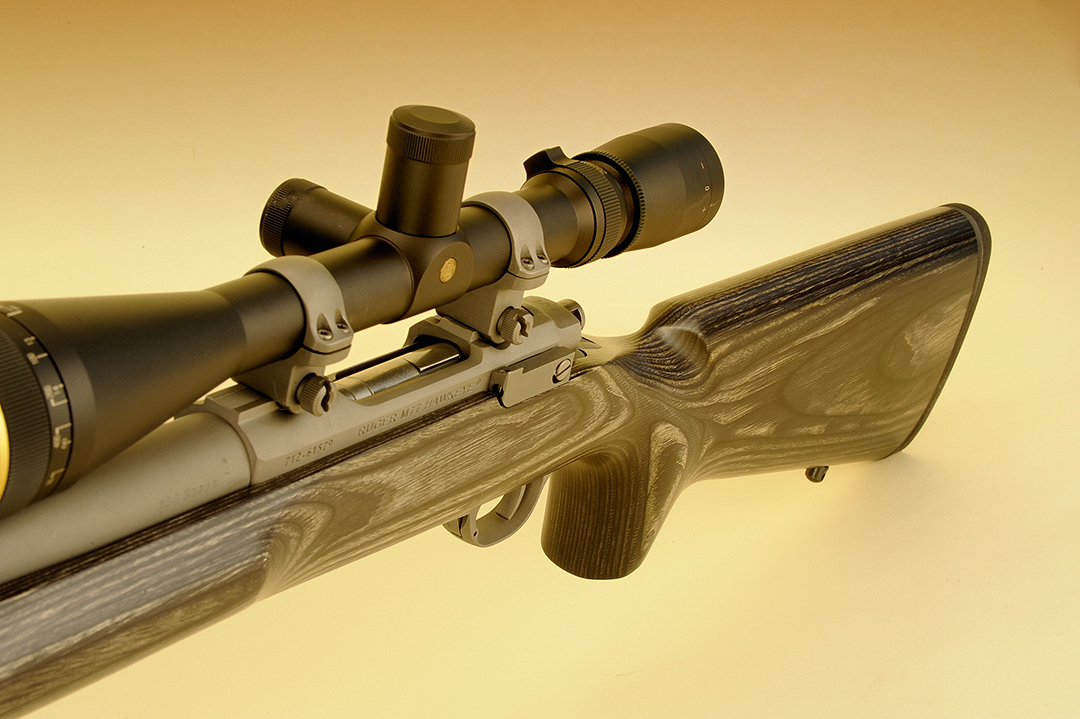
For the varmint hunter, this could be the gun. Chambered in the .204 Ruger, .22/250 and .223 Remington, 6.5 Creedmoor and the .308 Winchester, the gun has the lines and the features to suit even the most discriminating small-game hunter. For one, the stock is a bit more subdued as it has changed the color from a natural brown laminate to a darker, black color, better suited for concealment (camouflage) in the field.
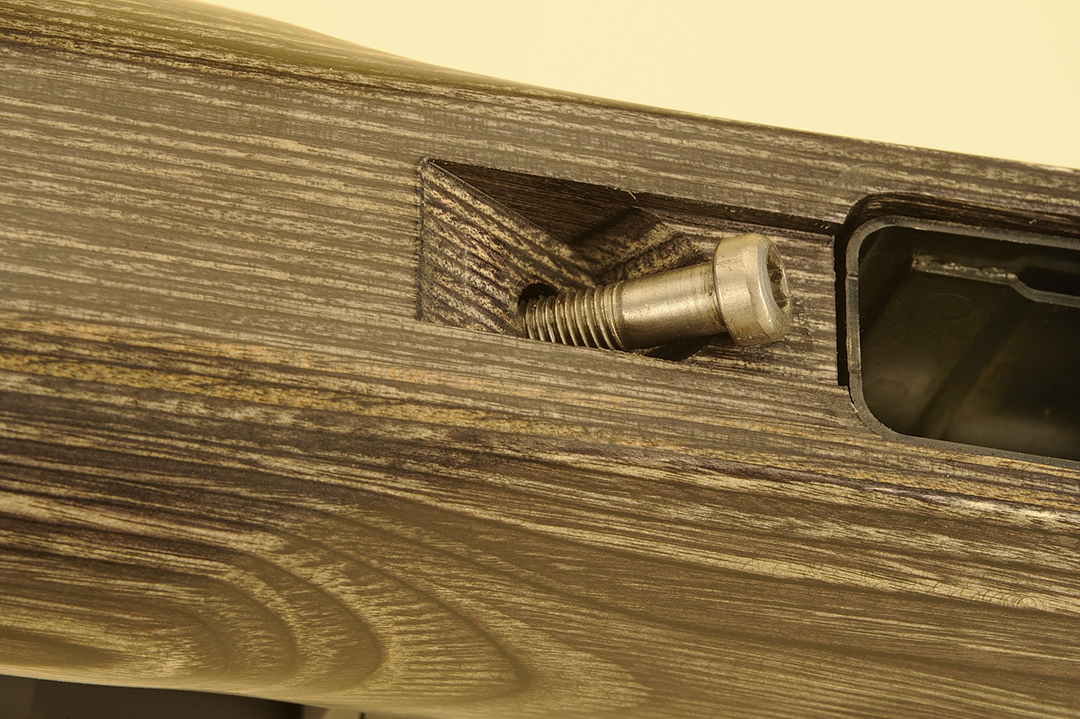
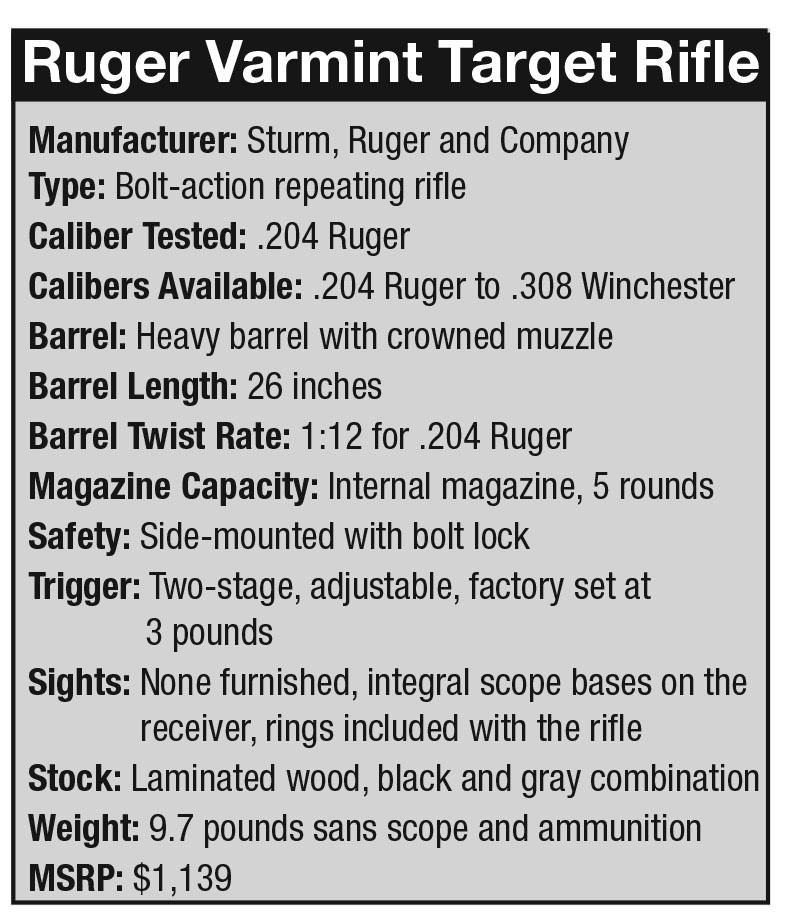
Running almost a full 12 inches rearward, it tapers down at the barrel receiver juncture to where it then houses the magazine, floorplate and trigger group. Adding a bit of class to the gun, Ruger thoughtfully has its trademark and name engraved in the matte-finished floorplate, thus separating both for a nice visual effect. Typical of Ruger, the magazine release is located on the front of the trigger guard; one push to the rear opens the plate allowing the five-round capacity of the .204 Ruger to drop out of the gun. While here, the trigger is two-stage affair, not the LC6™ variant as installed on other Hawkeye rifles. While the trigger is adjustable, from the factory it broke at 3 pounds on the nose and since it is a two-stage affair, and they always feel lighter than a conventional trigger, I was happy with this setting.
With any of the long-range rifles on the market today, the pistol grip seems to have a sharper curve to it, better suited to prone or bench shooting. In addition, there is a bit of a swell on both sides; there is no checkering and no pistol grip cap. Ruger has always made firearms on the conservative side, and this rifle still proves the point. The butt is void of any cheekpiece or Monte Carlo addition and is very full in appearance. The gun is finished off with a black, thin recoil pad with a spacer.
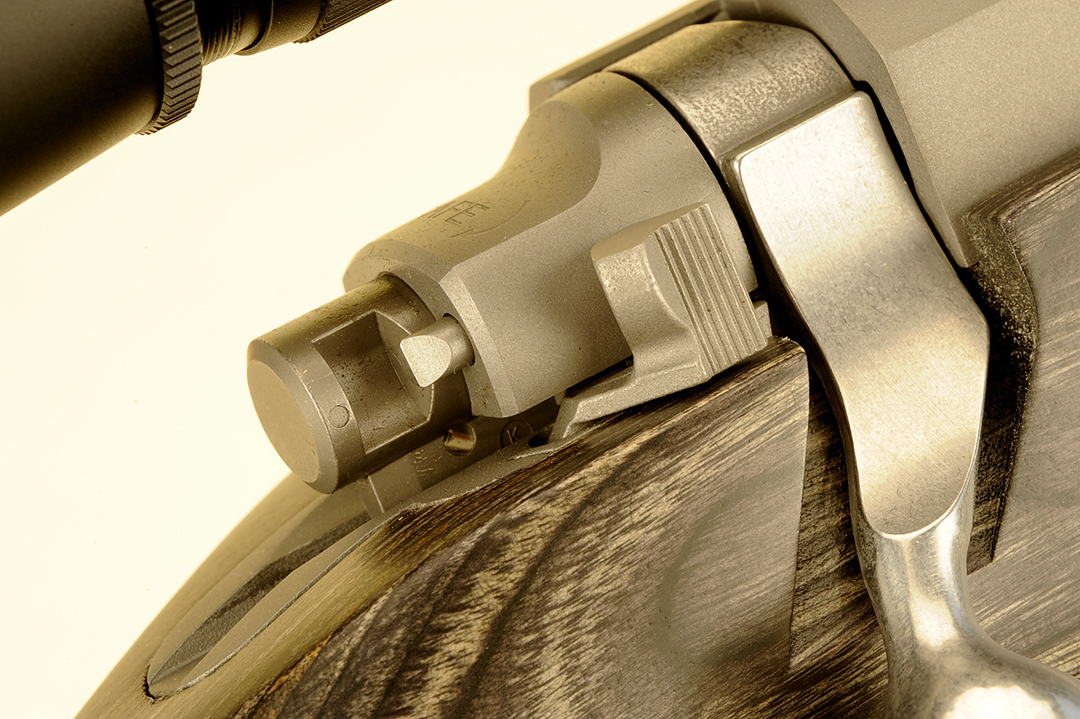
The receiver still houses a bolt with controlled-round feeding, a full-length claw extractor and in concert with a fixed blade-type ejector, showed no hesitation in sending spent cases out into space to the right of the shooter. The one-piece bolt is finished in a natural state, and along with twin locking lugs, ensure a
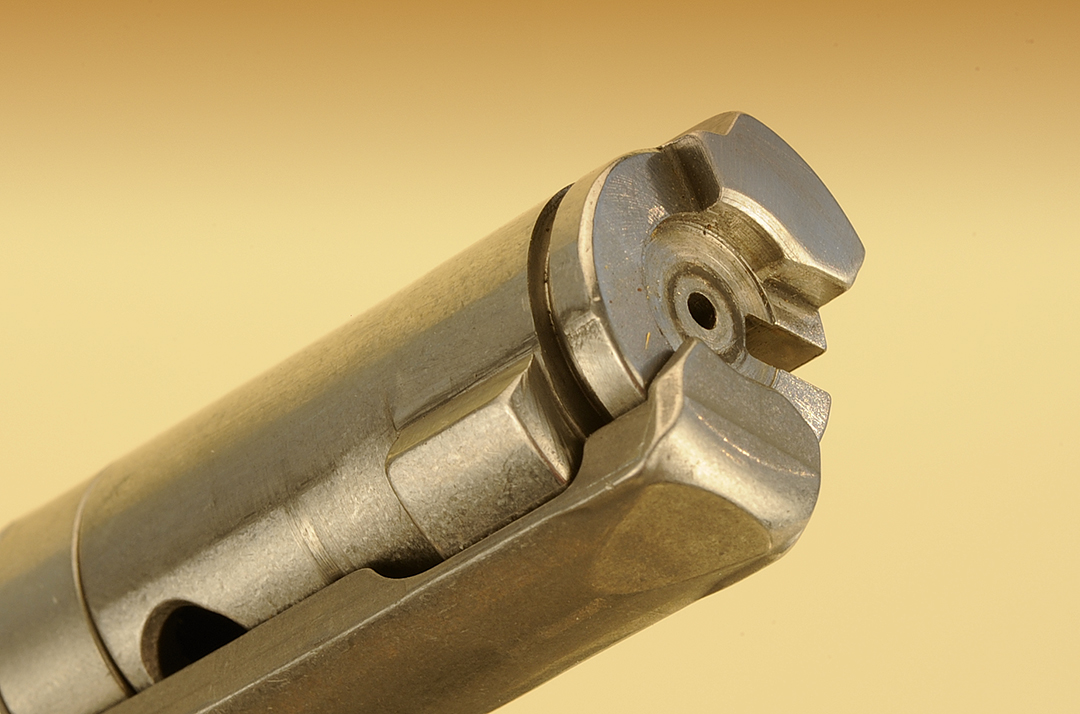
Taking the gun apart revealed some interesting details with both the action and stock. With the former, Bill Ruger pioneered the use of investment castings and it still holds true today. Everything in and around the receiver is made with this process and it’s amazing how fine the detail can be especially around the trigger mechanism. The only polished parts I see are located deep within the trigger, sear and safety lever, the rest illustrates how exact it all comes out of the mould. With the latter, and not to be forgotten is the Ruger angled stock screw made to pull down and back on the action as to sit snug in the stock. Inletting is sharp and well defined; again, technology speaks volumes here with no rough edges anywhere within the laminations.
As an added value feature, Ruger has always included a set of scope rings with each rifle that mate perfectly with machined notches on top of the receiver and to this, my Leupold scope was mounted. When the .204 Ruger was introduced, I had the pleasure of doing a photo shoot in New Hampshire with a new rifle and the Ruger staff. On the shooting table was a full rack of cartridges they were testing. When I asked what they were, the reply (jokingly) was to the effect if we tell you (the cartridges were new .204 Ruger ammunition); you probably will not make it back to your car to go home! Seriously, that was around 2004, and as a joint effort between Ruger and Hornady, this cartridge based on a .222 Remington Magnum case necked down to 20-caliber with a 30-degree shoulder rose to fame quicker than it took for the bullet go from the breech to the target. For my work, I then ordered a Ruger No. 1 and a Thompson/Center Precision Hunter in the .204 and never looked back with either factory or handloaded ammunition.
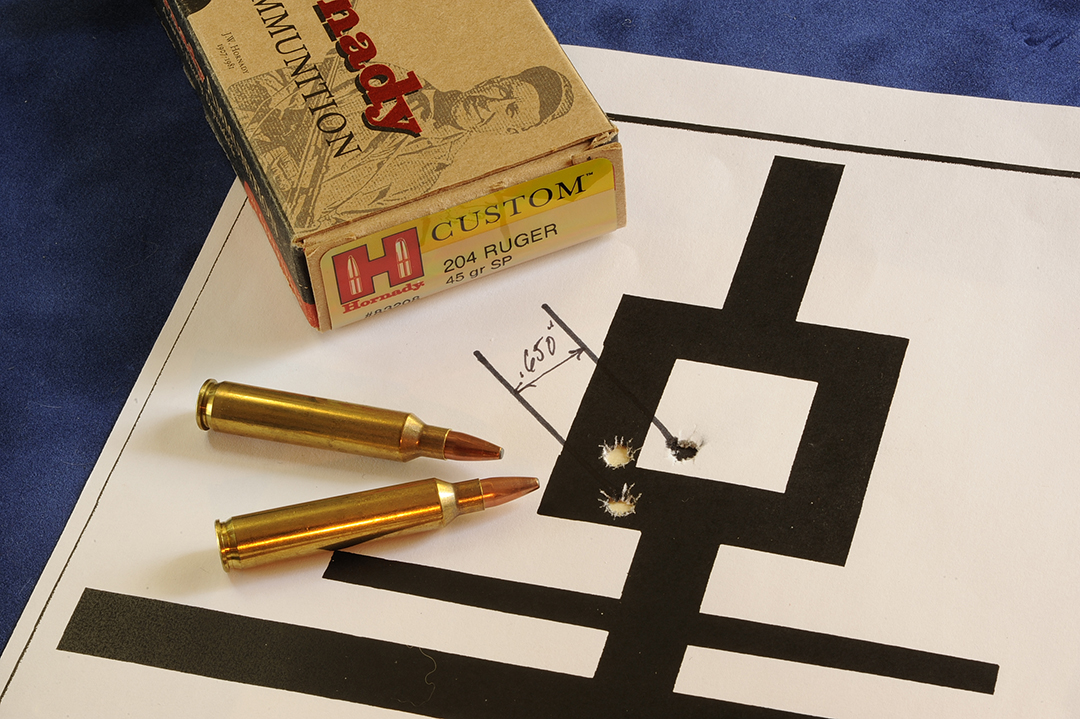
For accuracy, this gun was no exception and it shows what can be done downrange today with factory ammunition if you don’t care or even want to handload. On the other hand, if you reload ammunition with the .204, with 32-grain bullets, with small groups in brackets, stick to Varget (.650 inch) or IMR-4198 (.710 inch) powder. With heavier 40 grainers, BLC-2 (.880 inch) or IMR-4064 (.800 inch) will provide sub-minute-of-angle groups with little or no effort on your part.
Back to factory ammunition from Remington and Hornady. Since the weather was so nice, I decided to shoot three, three-shot groups at 100 yards, pausing in between each shot and rather than average everything, I would pick the best group and show it here. This way, you can see the full potential of the ammunition from one group, rather than an average, taking note how it compares to handloads. With the Remington 32-grain AccuTip Boat Tail, they quoted 4,225 feet per second (fps) from test barrels I assume, but in reality, even with a long barrel, I got 4,081 with a .870-inch group. Moving up to the heavier 40-grain AccuTip Boat Tail, they published 3,900 fps; my reading was 3,831 with a .830-inch group. Finally, the best group of the day was again credited to a heavier bullet in 45 grains, but this time from the original .204 designer Hornady with 3,635 fps; my reading was 3,404 with a .650-inch group.
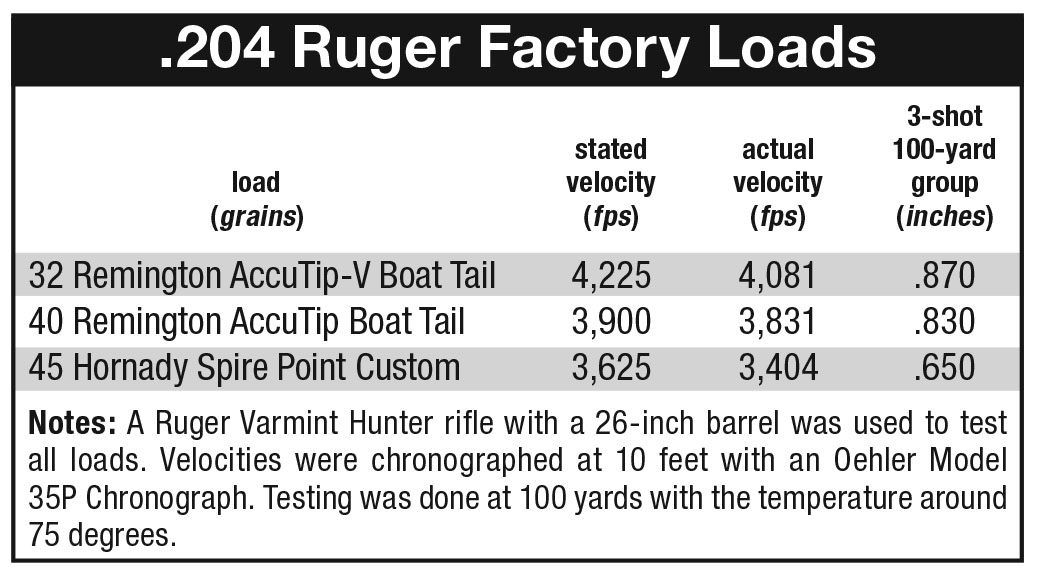
Naturally, since we are talking varmint ammunition, the talk soon settles around how good everything will be out yonder. According to the label on the Hornady box, with its 40 grain V-MAX offering, if I zero the gun at 200 yards, I see +0.7 inch at 100, 0.0 inch at 200, -4 at 300, -13 at 400 and if I really want to stretch out in perfect conditions, I will see an elevation of the crosshairs over the average height of a woodchuck in round numbers of -28 inches of drop at 500 yards. Since I’m in New England, and the hedgerows are shorter than out West, I can handle the properties of the .204 Ruger at 300 yards with ease.
As far as availability goes, the gun is not in the present catalog, but a call to Ruger notes popularity of the gun has never waned, and it could have a comeback sometime in the future. On the other hand, checking the web, I find dealers, distributors and wholesalers have this gun in stock as well a limited availability on the secondary market, so I know you can still find one for your hunting needs.
This Ruger Varmint Target gun is the perfect companion for the small game or serious varmint hunter. Once you have one, I know it will never be relegated to being a safe queen, so get out and have fun.
As an investment, this gun is worth it.

